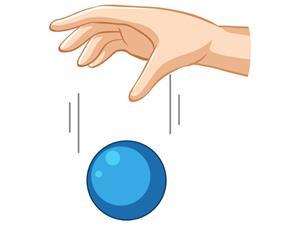
PUMPA - SMART LEARNING
எங்கள் ஆசிரியர்களுடன் 1-ஆன்-1 ஆலோசனை நேரத்தைப் பெறுங்கள். டாப்பர் ஆவதற்கு நாங்கள் பயிற்சி அளிப்போம்
Book Free DemoChristy is travelling in a car at a speed of 50\ m/s. Can you find the distance that Christy will cover in one minute?
Known values:
Speed = 50\ m/s
Time = 1 minute = 60 seconds
The formula is,
Substituting the known values in the formula,
Therefore, Christy covered 3000\ metres in a minute at 50\ m/s. But can you guess towards which direction Christy has travelled?
Speed is a scalar quantity, which does not specify the direction but only the magnitude. So, how can we find the direction?
The answer to the above question is velocity. Using velocity, we can find the speed with direction.
If an object's direction of motion is well defined along with its speed, a wide notion of its rate of motion can be achieved. The term velocity refers to the quantity that defines both these characteristics.
Velocity is the rate of change in displacement. The speed of an object moving in a definite direction is known as velocity. Hence, it is a vector quantity. Its SI unit is m s^{–1} (or) m/s.
Example:
1. Airplanes and ships are not only required to know their speed but also their direction.
2. If we drop the ball from a certain height, it will have a certain speed in the downward direction. Thus, it has both speed and direction.

Falling ball
The statement 'A car travels south at 50\ km\ per\ hour' describes the direction in which the car travels and thus explaining the velocity.
The velocity can be uniform or variable. It can be varied by changing the object’s speed, the direction of motion or both.
Average velocity:
An object's rate of motion can be expressed in terms of average velocity as it moves in a straight line at a variable speed. It is measured in the same way as the average speed is calculated.
If the velocity of the object is varying at a constant rate, in that case, the arithmetic mean of the initial and final velocity over a given period of time is used to measure average velocity.
v_{av} - Average velocity
u - Initial velocity of the object
v - Final velocity of the object
The formula to calculate the average velocity using displacement and the time taken is
Zero Displacement:
In some circumstances, the displacement can be zero. Let us see an example to understand this clearly.
Consider that a formula one race car driver finished 250\ km race in one hour and thirty minutes. The racer finished at the place where he/she started. So, what will be the average velocity?

Race car
We know that,
First, the value of displacement has to be found. But the important thing to be noted here is that the starting and finishing point are the same. Therefore, the displacement will be zero.
If the displacement is zero, then the average velocity will also be zero.
Important!
Note: If the initial and final point of an object's place is the same value, then the displacement is zero. Since there is no change in the position of an object, there is no displacement.